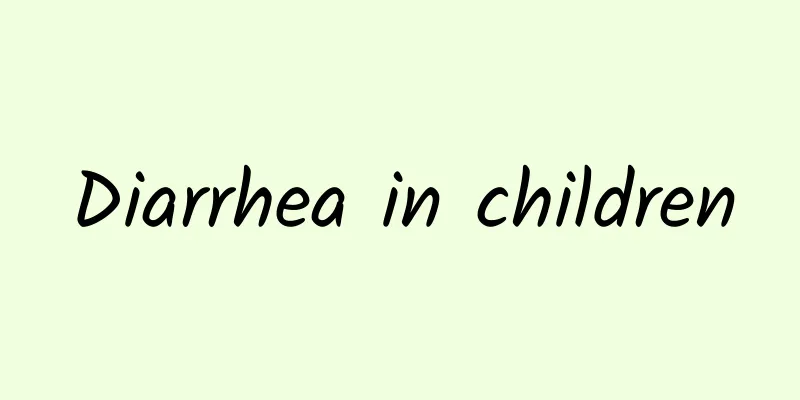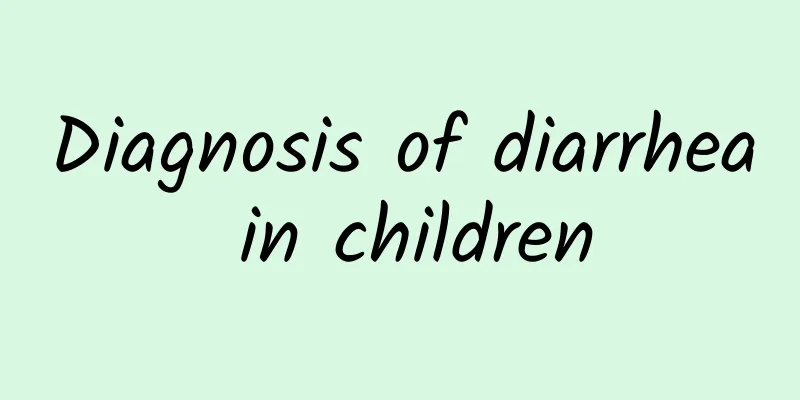Diarrhea in children

|
Pediatric diarrhea is a common disease and a threat to children's health, so we should try to prevent it. If a child has this disease, the first thing to do is to do relevant examinations, diagnose the disease, and then carry out effective treatment. The following is the examination method for this disease, I hope it will be useful to everyone. 1. Routine stool examination Stool microscopic examination, pay attention to the presence of pus cells, white blood cells, red blood cells and phagocytes, and also pay attention to the presence of worm eggs, parasites, fungal spores and hyphae. Sometimes it takes several times to be meaningful, which is helpful for the etiology and etiology of diarrhea. 2. Stool culture is important for determining the pathogen of diarrhea. The positive rate of stool culture is low in one test, so it needs to be done several times. Immediate culture of fresh specimens can increase the positive detection rate. 3. The stool latex agglutination test has diagnostic value for some viral enteritis, such as rotavirus, enteric adenovirus, etc. It has good sensitivity and specificity and is helpful for the diagnosis of Campylobacter jejuni enteritis. 4. ELISA is highly sensitive and specific to rotavirus, which helps in the diagnosis of rotavirus enteritis and other viral enteritis. 5. Polyacrylamide gel (PAGE) electrophoresis test This method can detect rotavirus subgroups and different electrophoretic types, which is helpful for the classification and research of rotavirus. 6. Fecal reducing sugar test When disaccharide digestion and absorption are poor, fecal reducing sugar is positive and the pH value is <6.0. Reducing sugar test can be done with modified Ban's reagent or Clinitest test paper. Secondary disaccharidase deficiency is much more common than primary one, and the most common primary one is sucrose-isomaltase deficiency. 7. Fecal electron microscopy is valuable for the diagnosis of certain viral enteritis, such as rotavirus enteritis, Norwalk virus enteritis, etc. 8. Blood leukocyte count and classification The total leukocyte count is generally not increased in viral enteritis. The total leukocyte count may or may not increase in bacterial enteritis. More than half of the children have increased band nuclei, and the number of band nuclei is greater than 10 percent, which is helpful for the diagnosis of bacterial infection. 9. Blood culture is of diagnostic significance for bacterial enteritis such as bacillary dysentery, Escherichia coli and Salmonella. Positive blood bacterial culture is helpful for diagnosis. 10. For children with severe diarrhea, blood biochemical examination should be carried out in time to check blood pH, carbon dioxide binding capacity, bicarbonate, blood sodium, blood potassium, blood chloride, and blood osmotic pressure, which are of great significance for diagnosis and treatment. 11. For patients with persistent and chronic diarrhea, lactose, sucrose or glucose tolerance test, breath hydrogen test (a quantitative non-invasive method for measuring carbohydrate malabsorption, which can be applied if conditions permit), and fiber colonoscopy can also be performed if necessary. Patients with hypokalemia should undergo electrocardiogram examination; patients with prolonged course of disease, nutritional disorders and severe symptoms of infection and poisoning should undergo X-ray and B-ultrasound examination. Electrocardiogram examination of patients with hypokalemia shows flat T waves, bidirectional or inverted T waves and the appearance of U waves. The above is an introduction to the examination methods for pediatric diarrhea, which provides a clearer understanding of the disease. After the above introduction, I believe everyone has a new understanding of the disease and knows what examinations to do after getting sick. Therefore, children's health still needs to be prevented. |
<<: The harm of long-term diarrhea in children
>>: Diarrhea examination items for children
Recommend
Can people with hand, foot and mouth disease eat shrimp?
Patients with hand, foot and mouth disease can ge...
What foods should children not eat when they have a cough? What are the treatments for children's cough?
Coughing in children is quite common in spring. I...
There are 3 possible reasons why a two-and-a-half-year-old baby has white hair
If a two-and-a-half-year-old baby has white hair,...
Are livestock the source of hand, foot and mouth disease?
The main source of infection for hand, foot and m...
What are the causes of neonatal fever? To prevent neonatal jaundice, you need to do these
Every newborn baby is a treasure in the hands of ...
Is it easy to cure diarrhea in children?
Children will often encounter symptoms of pediatr...
What should children eat for mumps
When a child suffers from mumps, his diet needs t...
Children are prohibited from taking cold medicines. These 4 types of cold medicines cannot be given to children
With the continuous development of medical techno...
What are the symptoms of jaundice in infants and young children?
Jaundice in infants and young children is mainly ...
The examination of eczema in children varies according to the type
Eczema on the baby's face or body is particul...
Can children take Ganmao Ling granules? Does Ganmao Ling granules have any side effects on children?
Children can take Ganmao Ling Granules, because t...
How to prevent neonatal eczema 4 important measures to prevent neonatal eczema
Neonatal eczema is an allergic skin disease that ...
Children's allergic rhinitis allergic cough always recurs
If a child has allergic rhinitis or allergic coug...
How does baby jaundice occur? Five major causes of jaundice
Within 28 days after the baby is born, bilirubin ...
Are there any side effects to nebulization for children? Will nebulization develop resistance in children?
Under normal circumstances, if the nebulization t...









